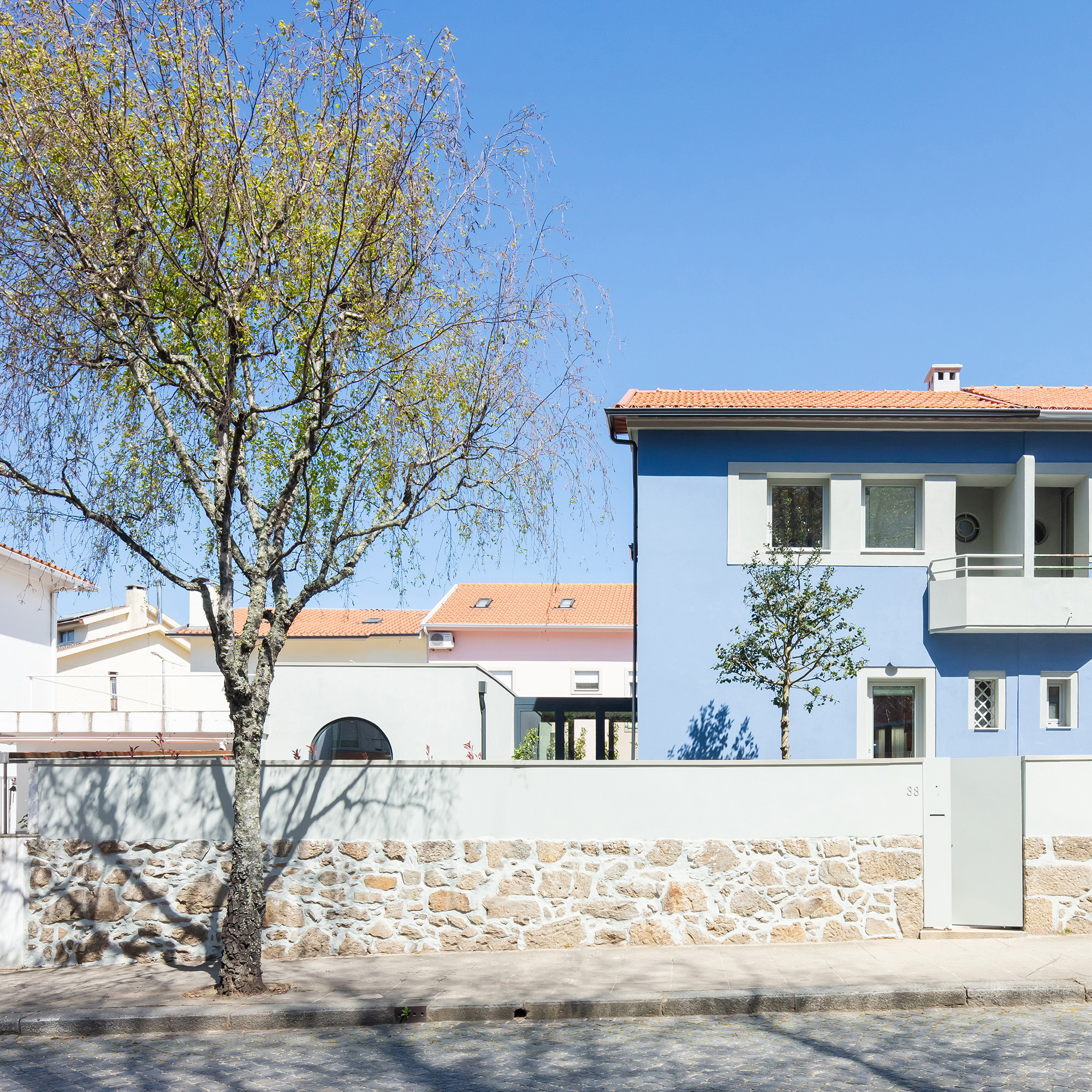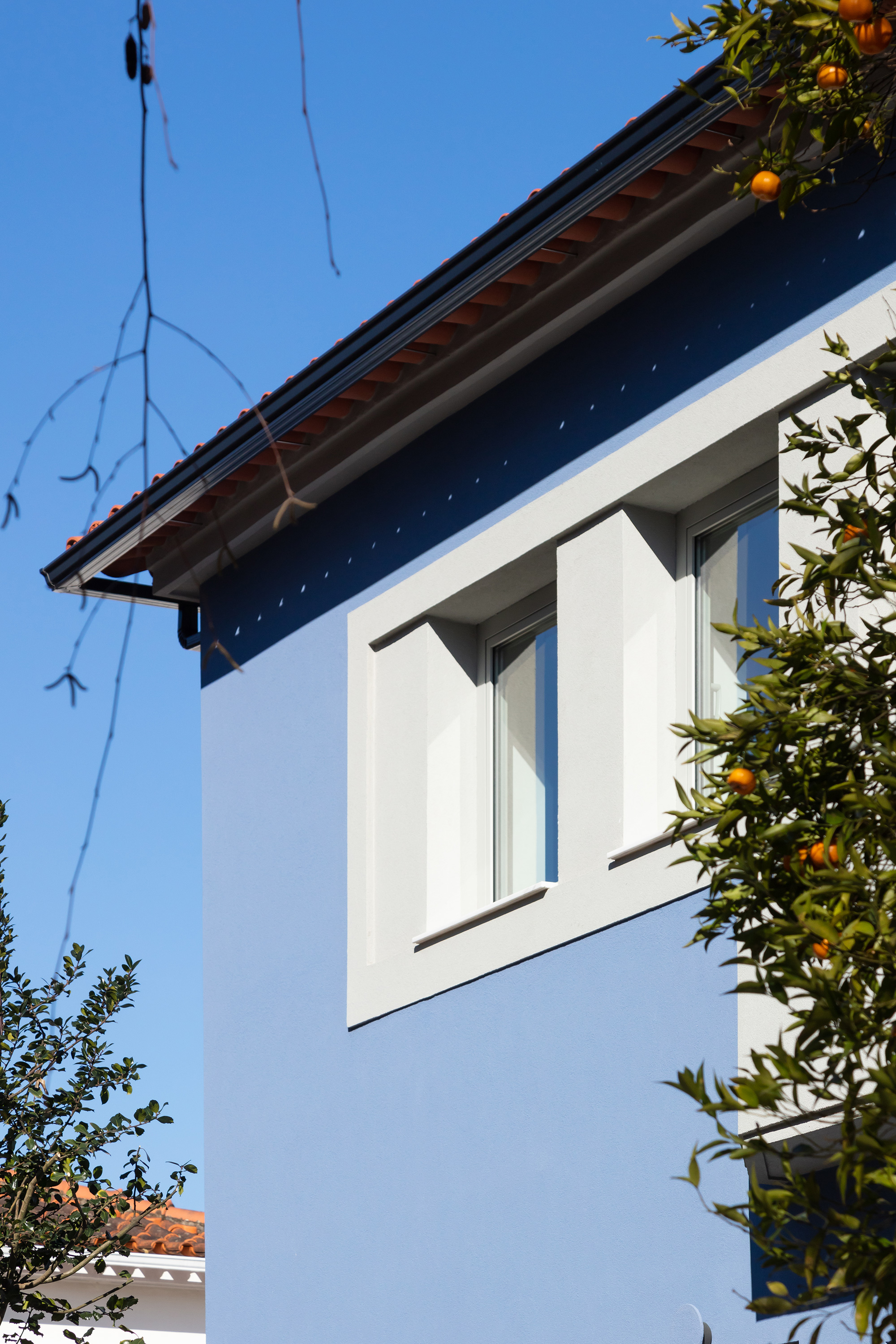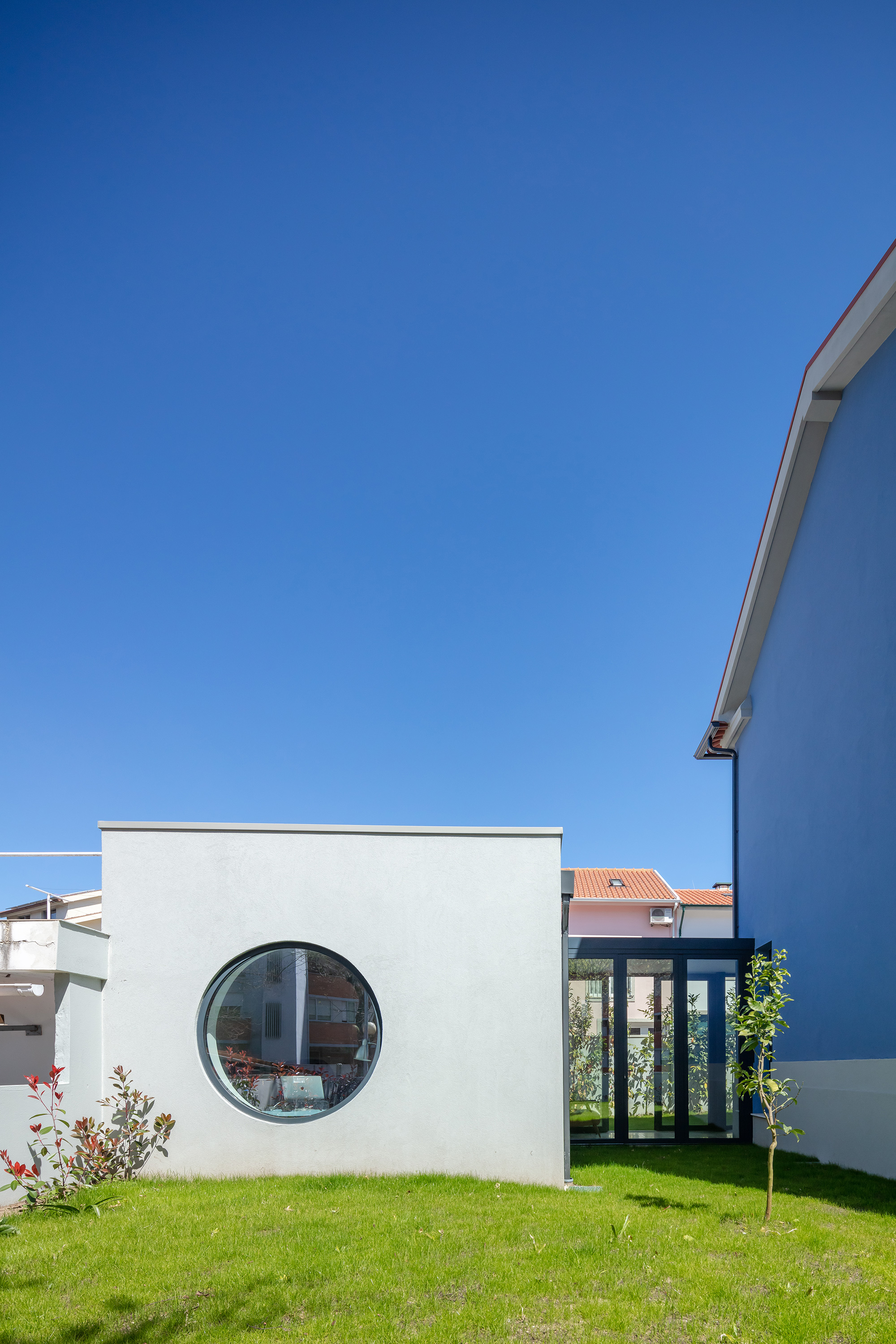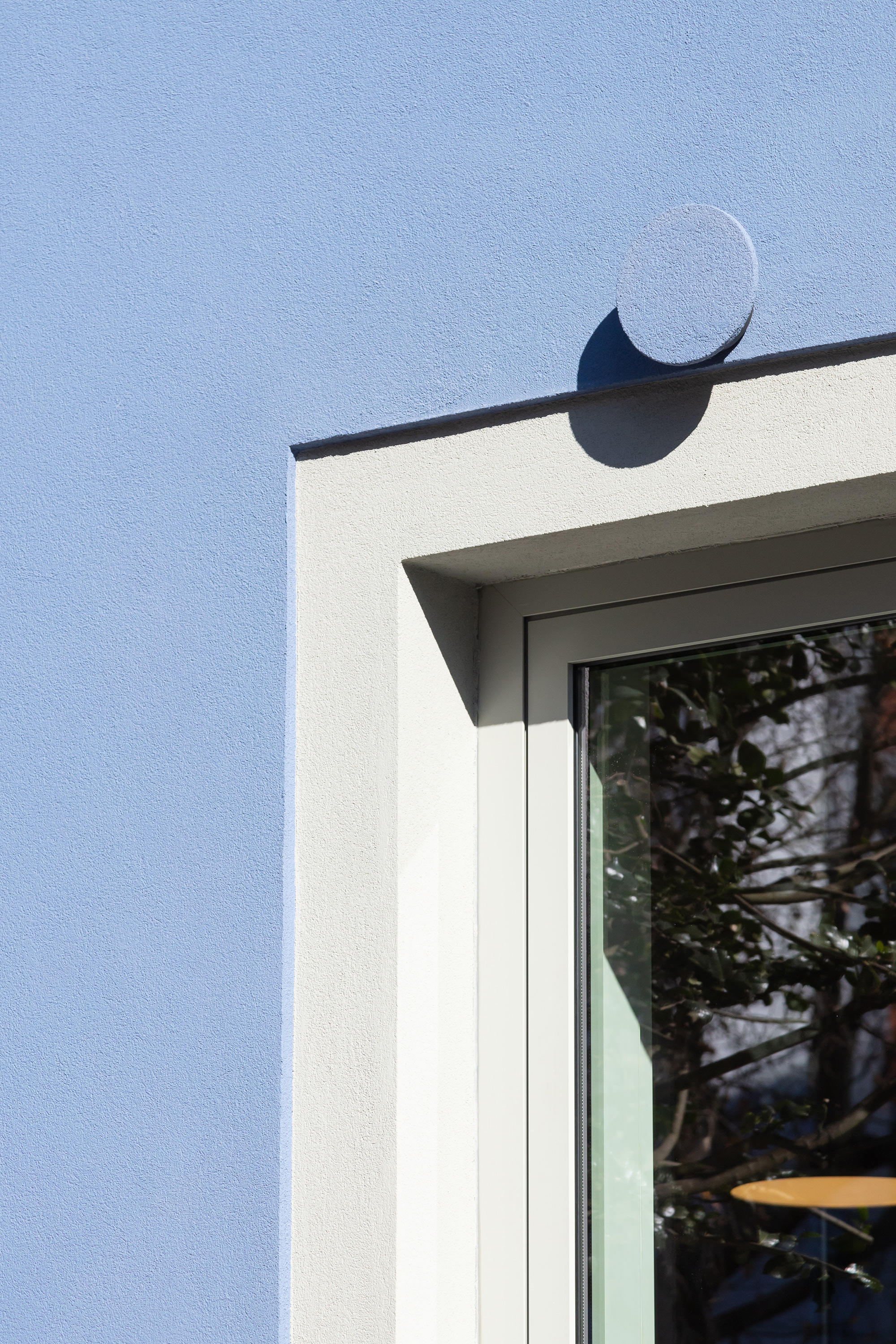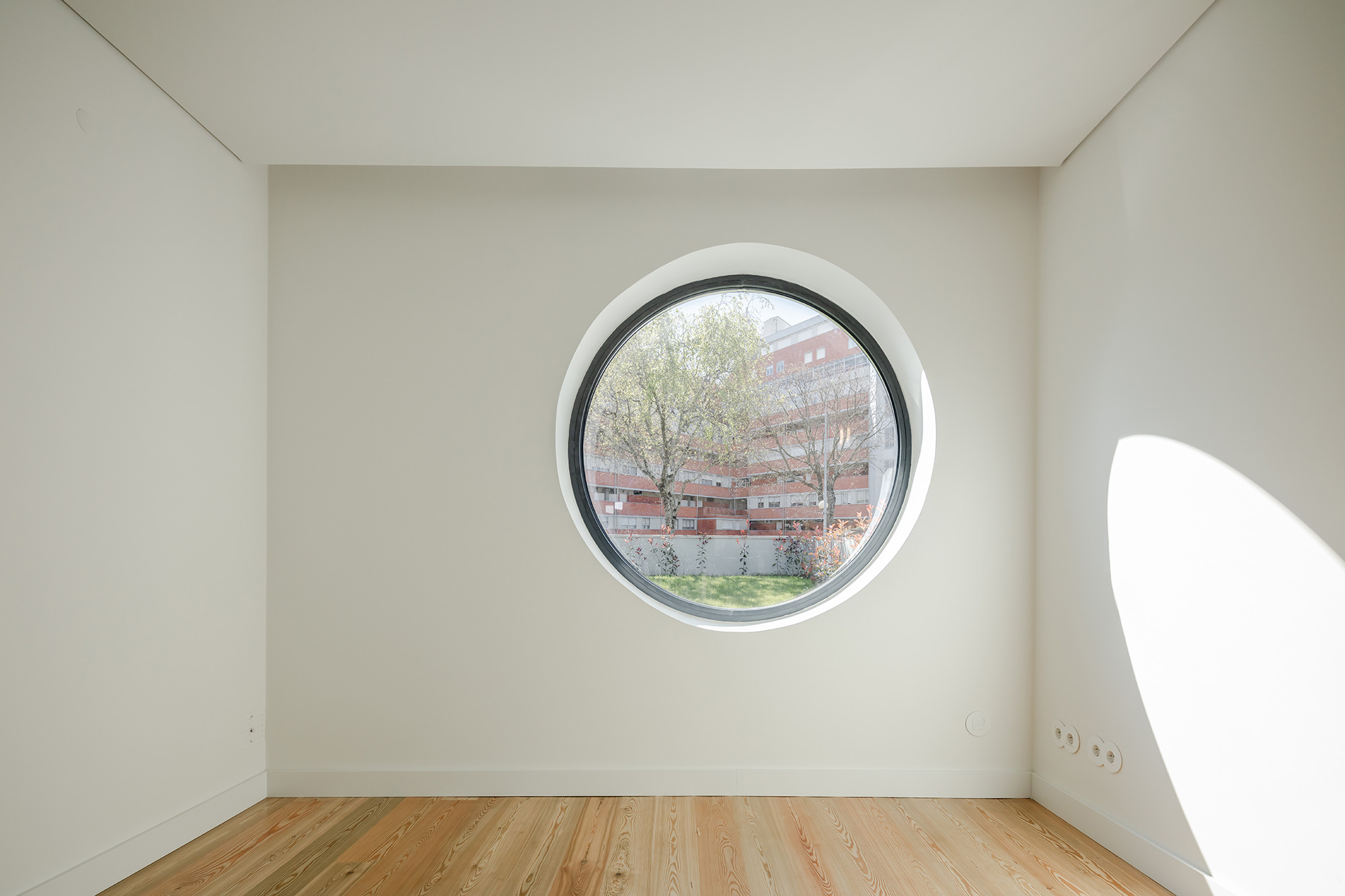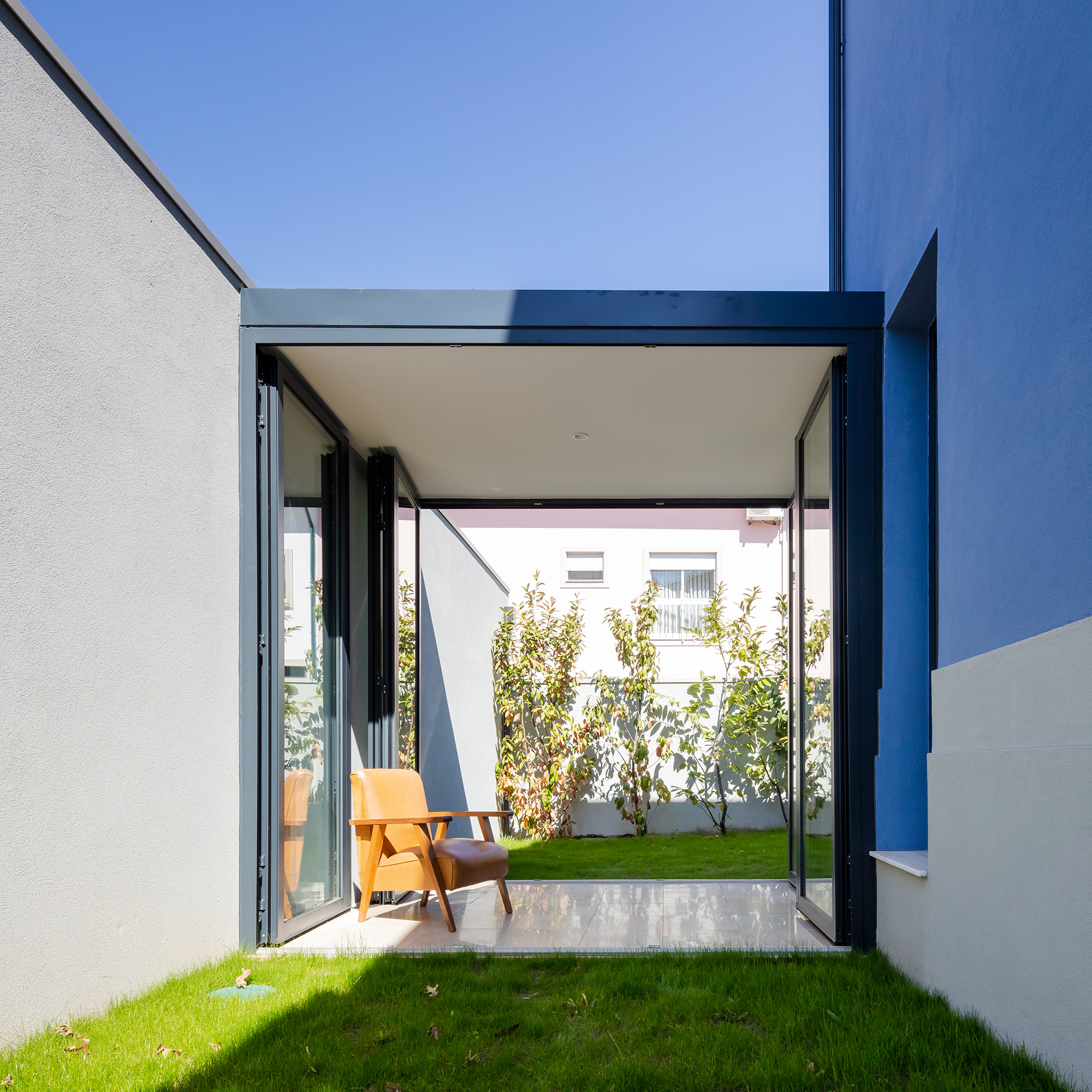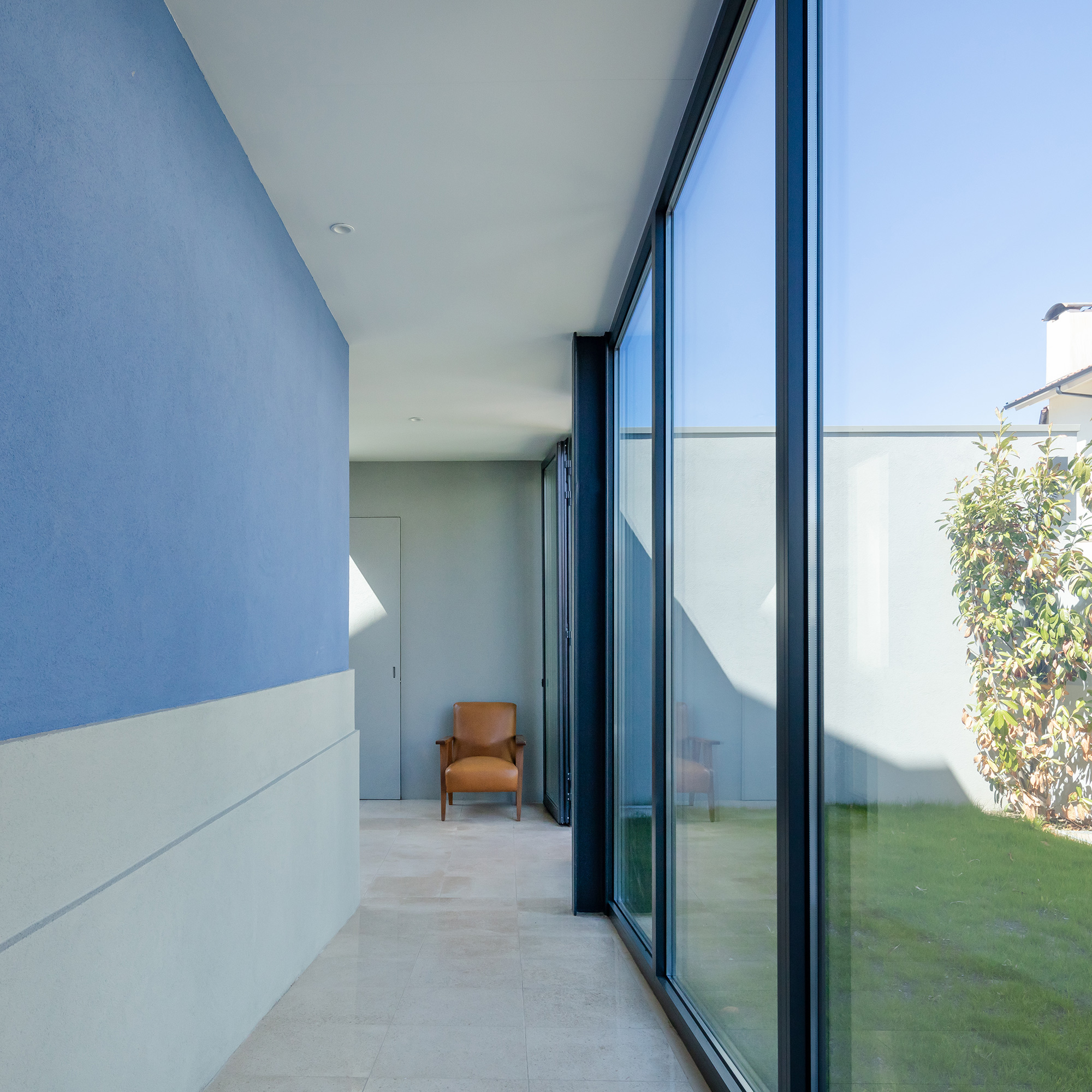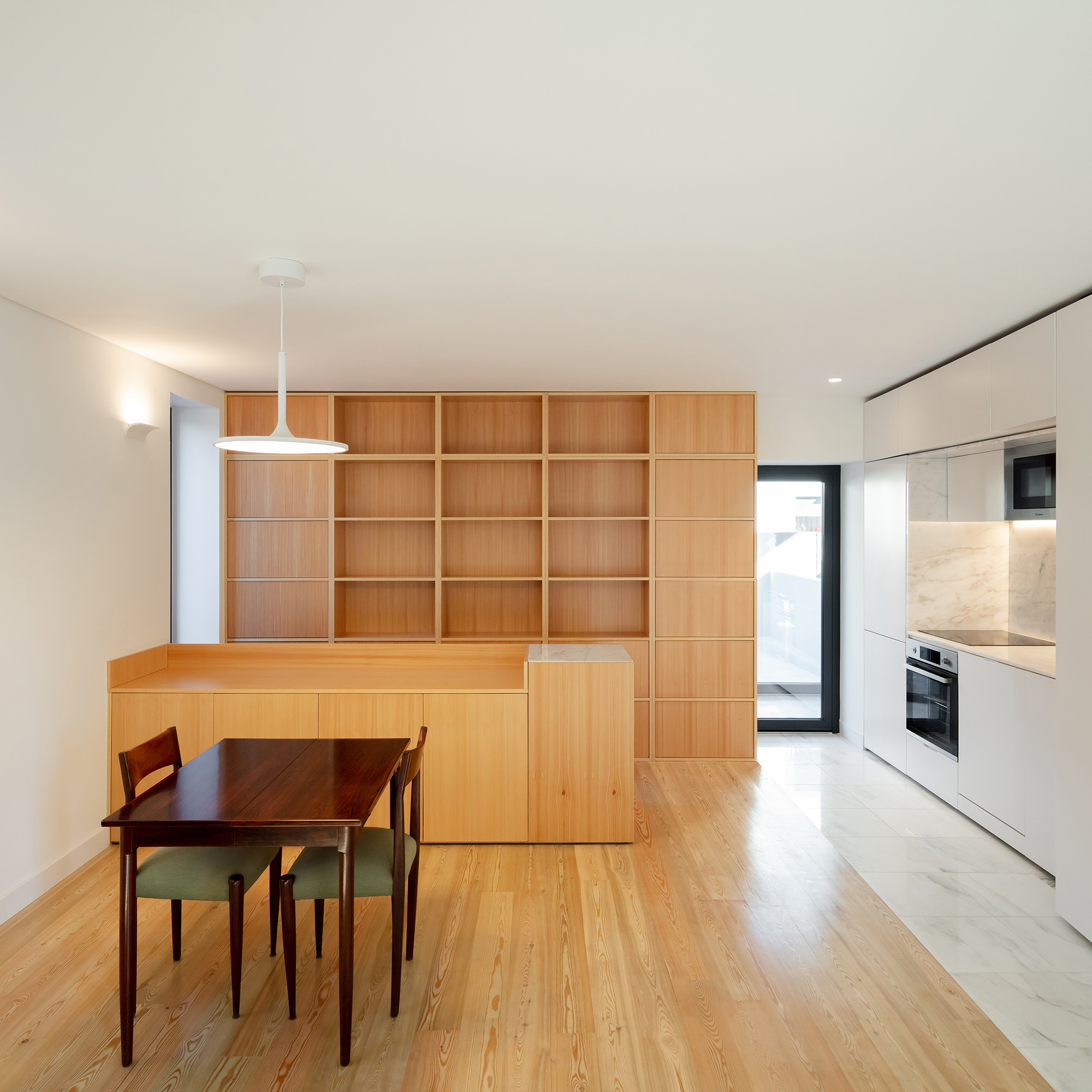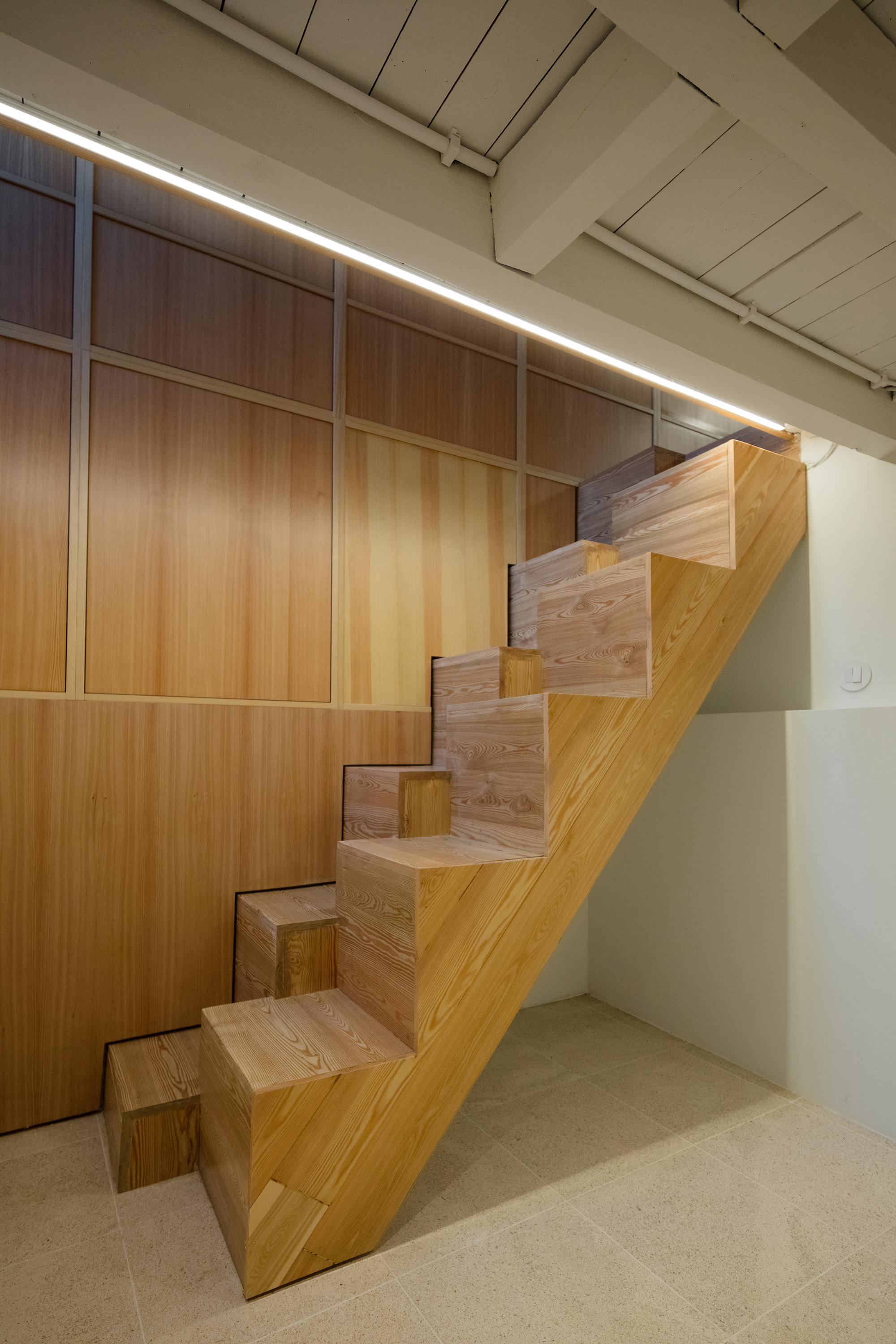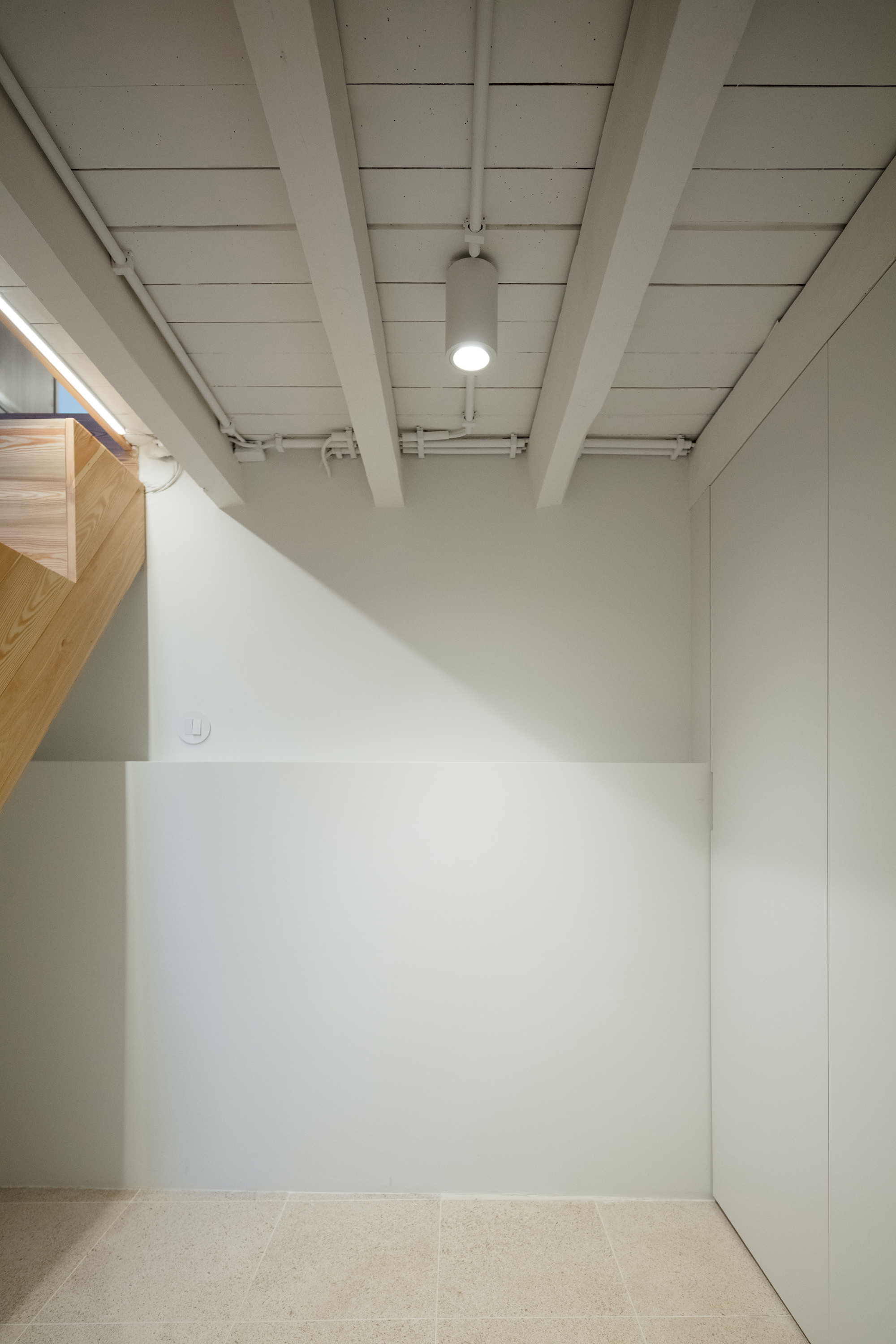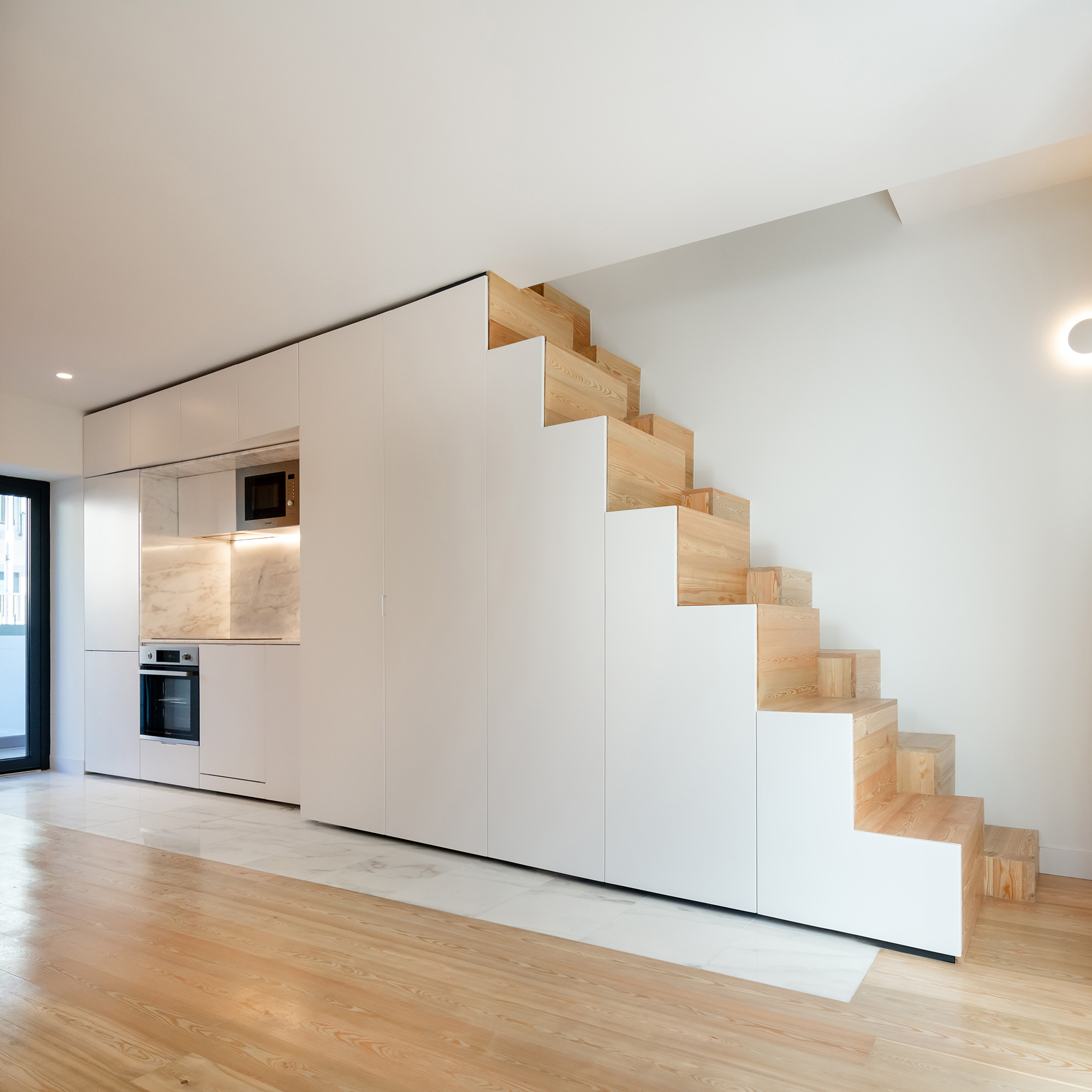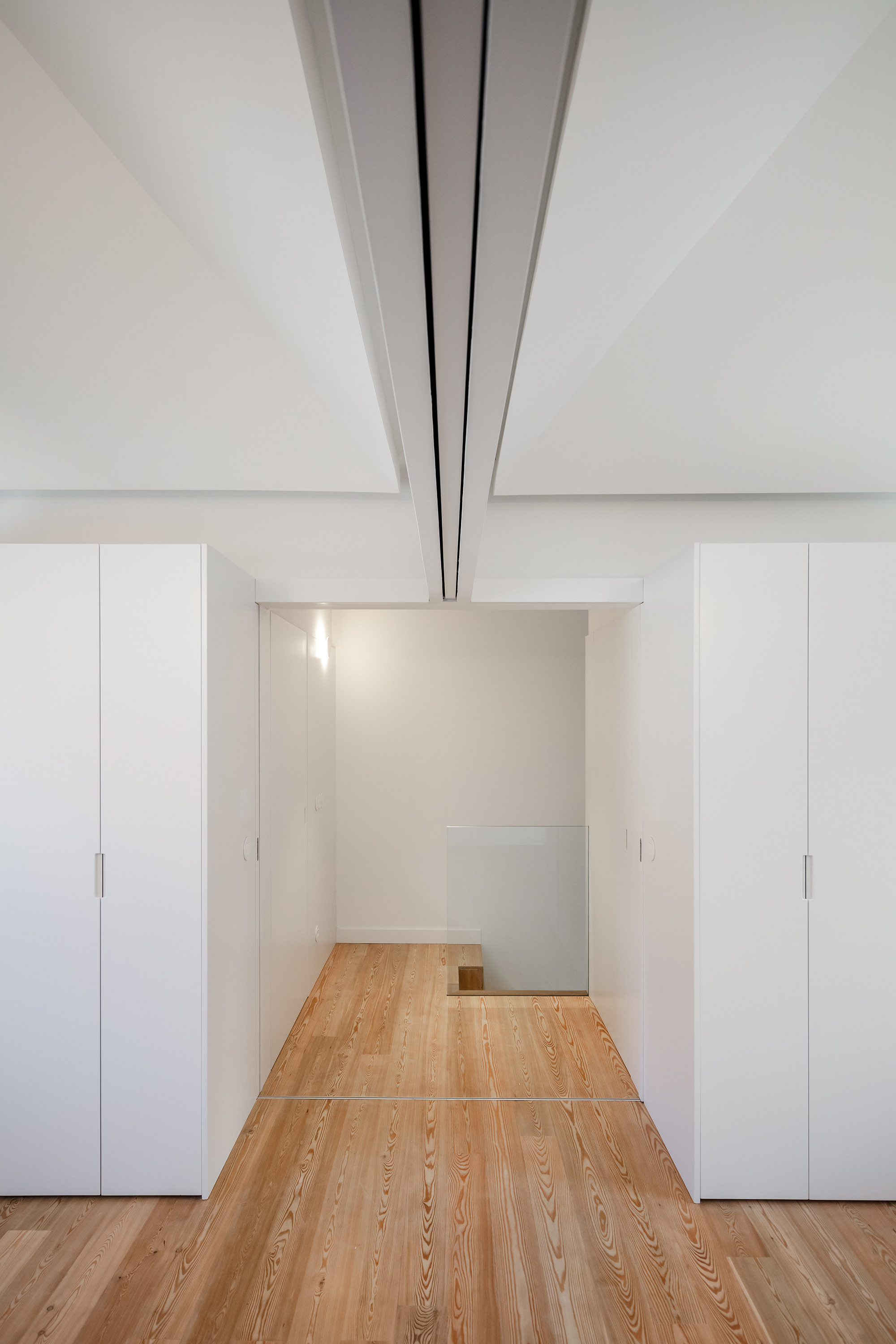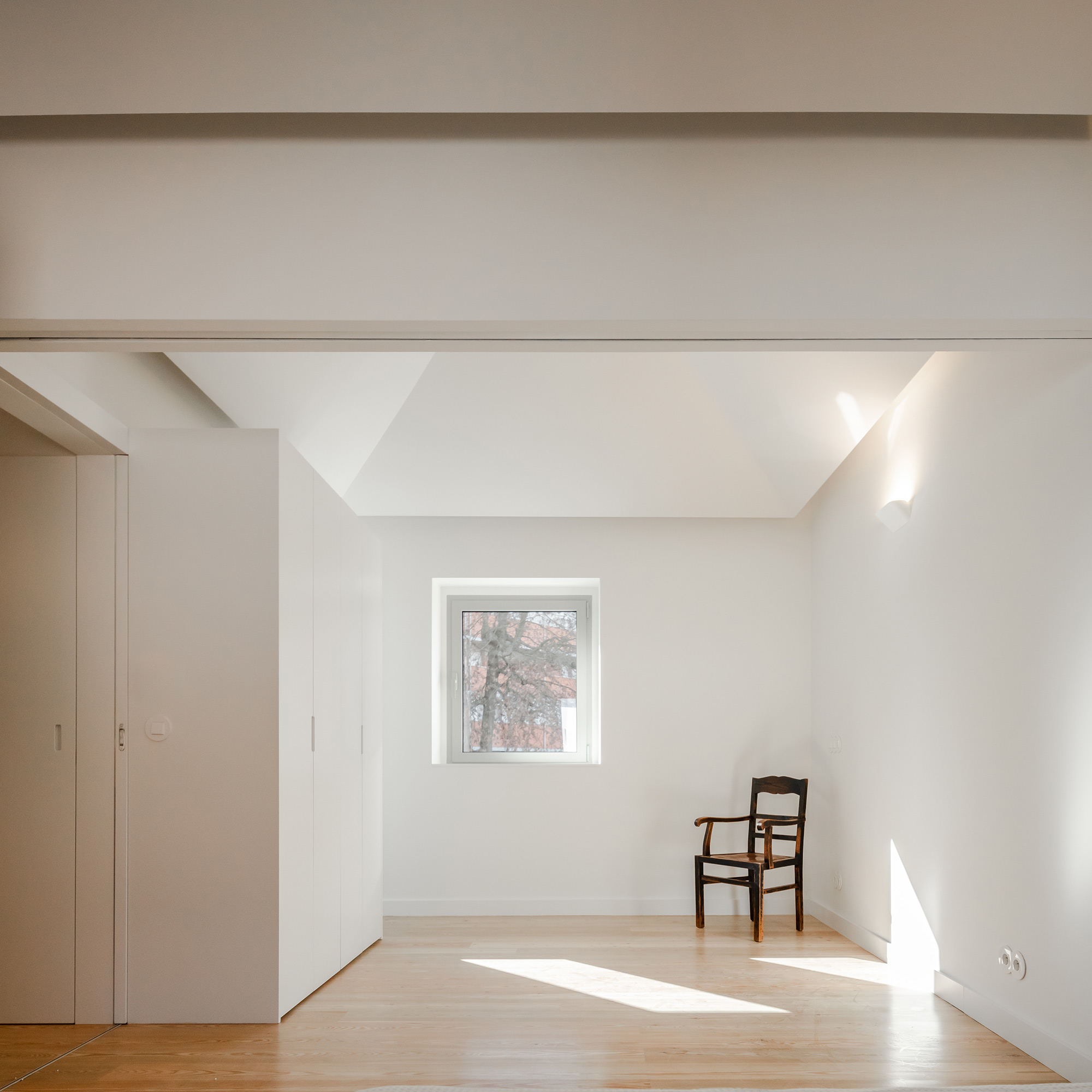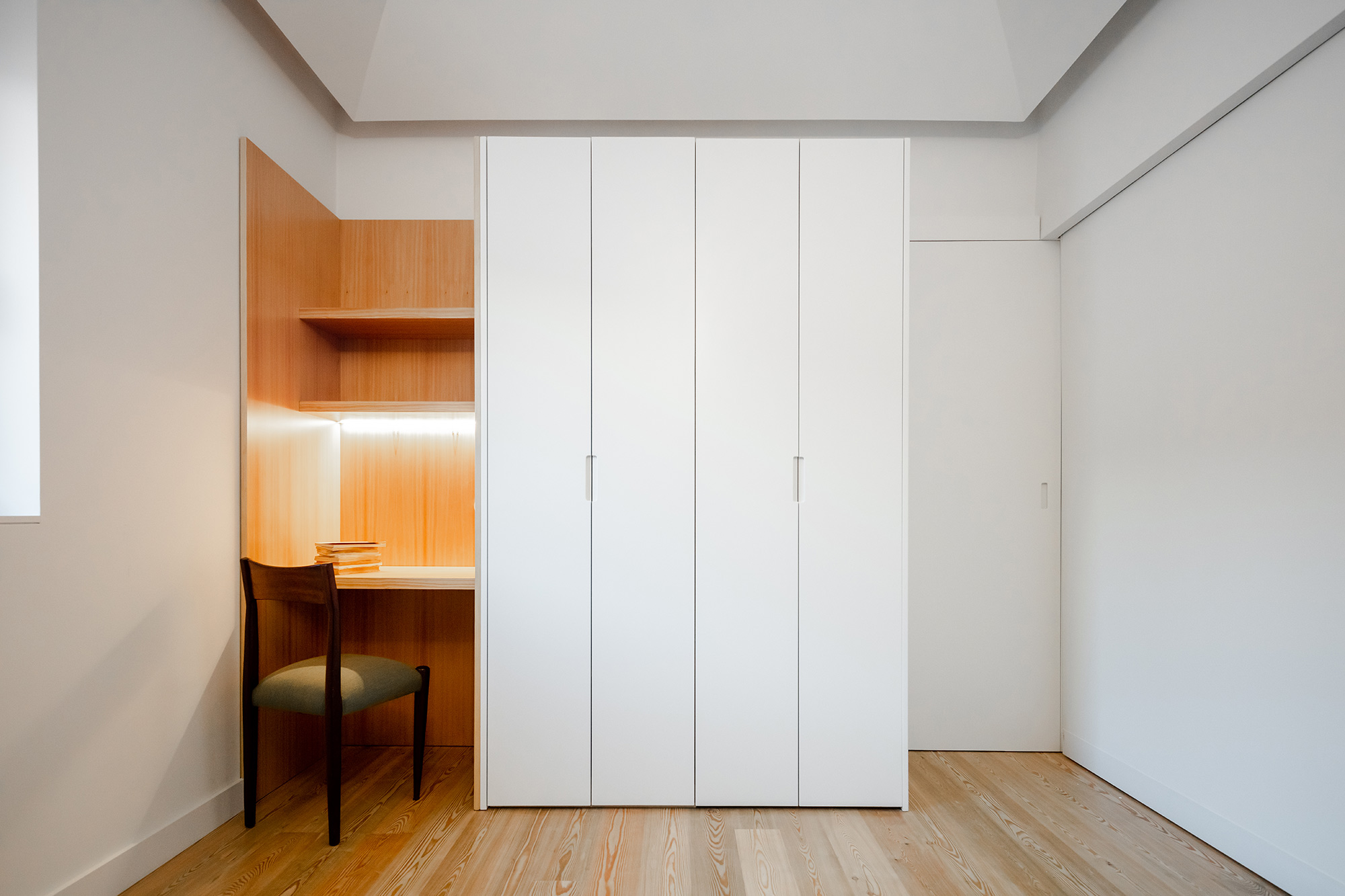A Portuguese house from the 1930s transformed into a bright and comfortable living space.
Located in Braga, Portugal, Saint Adrian House dates back to the 1930s. The neighborhood, named the Duarte Pacheco Quarter, was built between 1935 and 1939 as part of the Estado Novo policy of the era’s authoritarian regime. The area featured social housing completed to low health and hygiene standards, reserved for the country’s most disadvantaged people. The style, named Português Suave (Soft Portuguese) followed the state-approved architectural design. Modest and simple, the buildings had granite masonry foundations and exterior walls with simulated stonework detailing completed with mortar. The interiors had small rooms as well as poorly planned layouts and fragmented spaces. Due to the buildings’ low comfort levels and the connection to Portugal’s past, the Estado Novo style has almost disappeared. Tiago do Vale Architects aimed to preserve the character of the original design while greatly enhancing the comfort of the living spaces.
A blend of original and new elements.
The team not only preserved existing features but also brought back lost elements from the original construction. For example, the architects recovered the simulated stonework details and installed period-accurate solid wood floors. However, the team opted for new colors to replace the original, bland color palette. Thermal insulation and thermally-broken window frames improve the house’s energy efficiency. A small garage now has an enlarged footprint and contains a home office with a circular window. This space also allows the owners to convert it into a guest room when needed. A light corridor connects this annex to the main house.
Inside the building, the studio optimized the layout for efficiency and comfort. Changes include the removal of partitions on the ground floor and the integration of the basement into the living areas. Redesigned, the staircase contains a hidden half-bathroom and a service area. The top floor houses the bedrooms. Designed as identical rooms, the two bedrooms can also become one large suite thanks to a mechanized dividing wall that drops down from the ceiling. Apart from using pine for the flooring, the studio also brought back the original white walls and installed Estremoz marble elements in the wet areas. Folding glass doors allow the residents to open the connecting corridor to the garden. Ultimately, the project successfully transformed the original house into a bright, contemporary, and comfortable home without compromising the building’s identity. Photographs © João Morgado.



